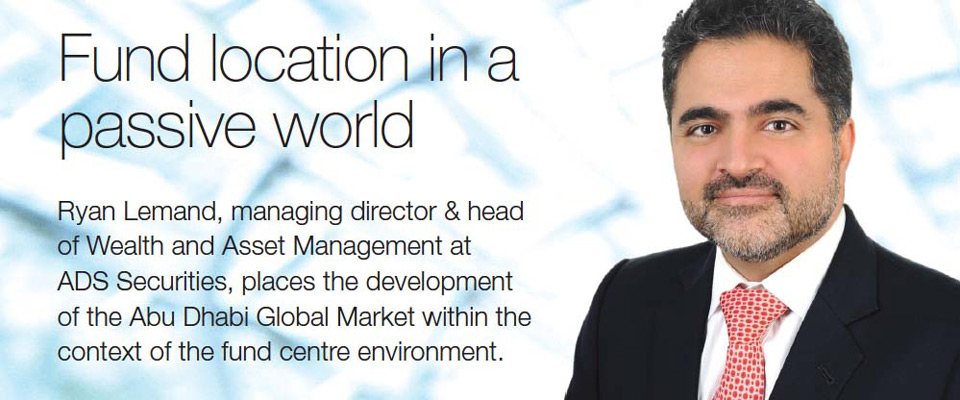As hurricane Irma smashed into the British Virgin Islands (BVI) the headlines were correctly focused on the human impact. Yet in the financial markets there was an additional concern, the BVI offshore financial centre.
Established around 2001, like many other independent financial centres, these jurisdictions have become an essential part of the financial services sector, and increasingly important as fund centres. But in the last few years we have started to see a change in where fund managers are looking to operate from. The impact of the hurricane in Caribbean on the financial system is much less than it would have been a few years ago, devastating as it was.
To understand why this is, we need to look back at the history of offshore financial centres. A factor which has contributed to the rise of these independent jurisdictions was the trend to move away from active management and invest in passive funds.
Partly driven by a ten-year bull market cycle, the rise in passive exchange-traded funds (ETFs) has been significant. They have taken over from actively managed funds, or alpha generators, and ETFs now have by far the largest market share. ETF fund managers were the investors looking at the different fund centres to establish their latest offering.
As ETFs have no active management all they need is a secure environment where they can create segregated funds and let them run. The primary consideration was always ‘ease of doing business’. This turned out to be a good symbiotic relationship with the growth in the number of ETFs fuelling the expansion of the fund centres.
Many ‘old school’ fund managers saw these centres as having a similar role to that of a library where investors could, rather like picking a new book, choose the fund which best fitted their global requirements and their risk-return profile. This is very different to the approach adopted by active managers, and therefore the services they need from the fund centre are completely different.
This approach meant that fund managers and other investors were happy to look at jurisdictions with light regulation, such as the Isle of Man or the Caribbean Islands. This is where the fast money managers – the hedge funds – wanted to go because they wanted to balance operational flexibility with risk controls and regulation.
Smarter rules
But times are changing, and over the last five years we have seen a move away from these centres, in particular a move towards protection provided by European laws. It is clear that we are heading towards a more regulated environment and the European-based fund centres are aligned to the new and incoming requirements. And, following a small number of high-profile cases of fraud, such as the Madoff scandal, this has to be seen as positive. The tighter regulatory frameworks are also becoming more intelligent. The approach is risk-based, rather than blindly imposing new regulations on all products, which is a good thing.
The leader in this area has been Luxembourg which has shown that it is now extremely easy and quick to establish a fund with much greater controls and regulation. Ireland has also followed this model, providing ease of set-up in a business-orientated environment, but giving access to a more regulated and protective environment. The response to this approach has been that even the Cayman Islands is now moving to a tighter regulatory regime following the model operated by the likes of Luxembourg and Dublin.
So, today, there are a range of fund centres to choose from, but which one should you opt for and why? When faced with these questions I always look at three parameters.
First, I look at the regulatory framework and find out to what extent it is multi-tiered? By that I mean whether the regulation is extremely tight and very protective to retail investors, or very lightly regulated and more suitable for sophisticated investors.
Second, I look at the ease of doing business. Can I have my fund set up in a very short time span or will it take me six to nine months, which may mean that I miss out on the market opportunity I want to target.
And finally, if I need to take offices, I look at the extent to which it is a favourable business environment. For example, the Abu Dhabi Global Market (ADGM), Dubai International Financial Centre (DIFC), Singapore and Luxembourg are very business-oriented environments where you are surrounded by related businesses such as fund administrators and custodians. You are then bathing in a pure business environment that is welcoming for you.
The future for the offshore centre
So where do offshore financial centres go from here? The main financial centres will always be more difficult to access and set-up in, but as regulation increases the benefits of being in London, New York or Hong Kong may outweigh the advantages offered by fund centres.
I can see that with a number of progressive fund centres we are now in the next phase of their development. Look at the ADGM, which is the financial freezone we established a couple of years ago here in the Emirate. It has similarities to what the DIFC has to offer. What stands out about the ADGM is the creation of a pure common law system – it is well regulated, to the standards of Europe.
The system is quick and efficient. In effect, ADGM offers you the pragmatism and ease of business that they have in the Cayman Islands coupled with a very good regulatory regime that is reassuring for institutional investors as well as money managers.
Fund centres like the ADGM have tended to adapt much quicker than other jurisdictions to the new requirements of investors. So, one of the new trends is separately managed accounts. This allows an investor to have a separate and segregated vehicle in his name to be managed by the fund manager, rather than having his money co-mingled and co-invested with others in a collective vehicle.
These separately-managed accounts are now a significant growth area for fund centres. For example, at the ADGM they have developed a so-called protected cell company (PCC) regime. A PCC is the sub-fund under an umbrella fund where you can put a single investor into a segregated vehicle that belongs to him and in his name – his assets are completely segregated and separate from other investors. This co-mingling is less demanded or requested by the larger sophisticated institutional investors.
So where do we go from here? In my opinion, capital markets regulators and central banks need to carry on introducing risk based investor protective regulations. But, they need to balance this approach by being proactive and business friendly. This will then stop professional money managers from electing to go to lesser regulated ‘easy to operate in’ jurisdictions.
©TheDESK 2017
©Markets Media Europe 2025













